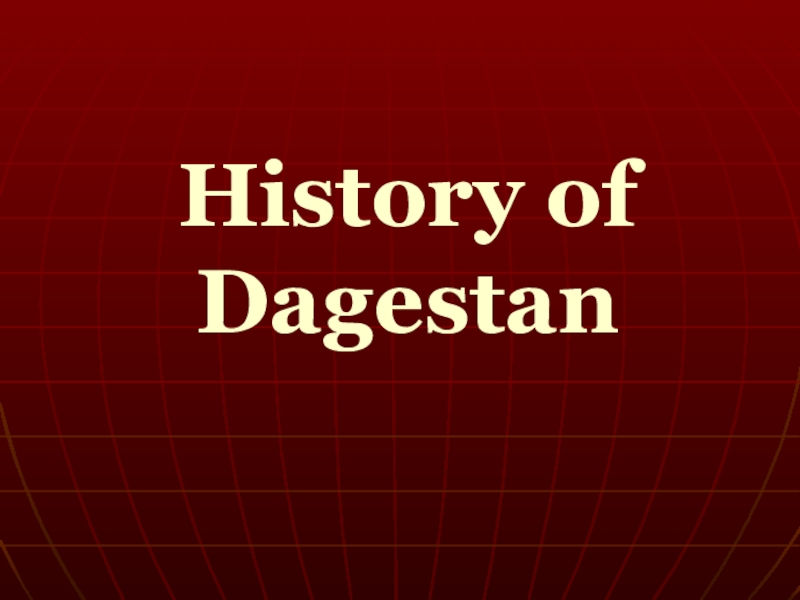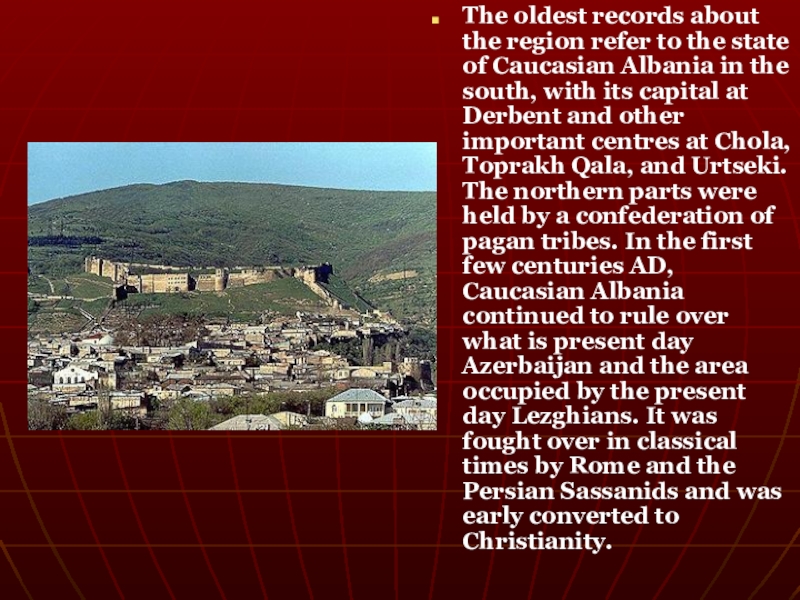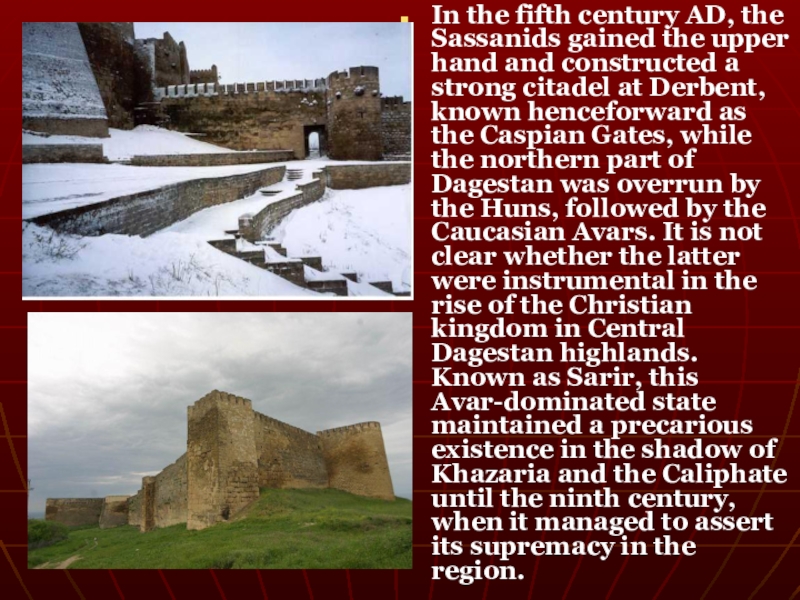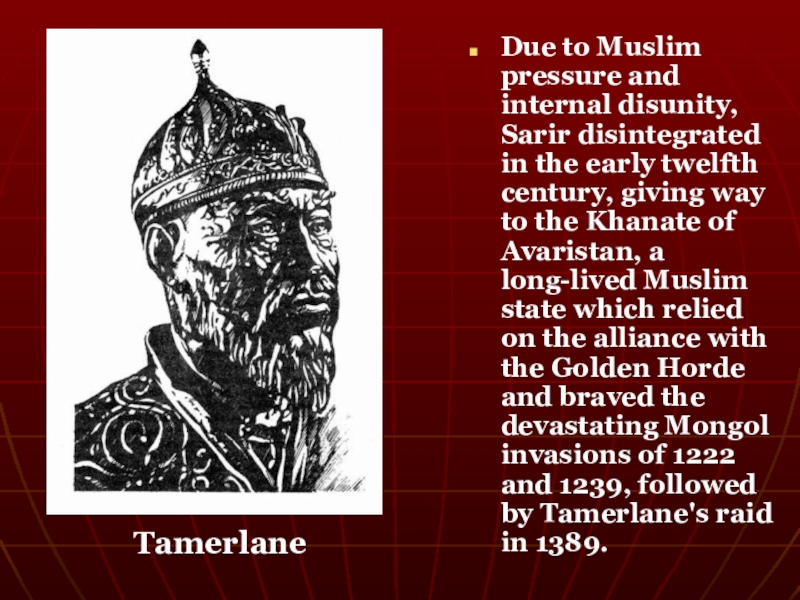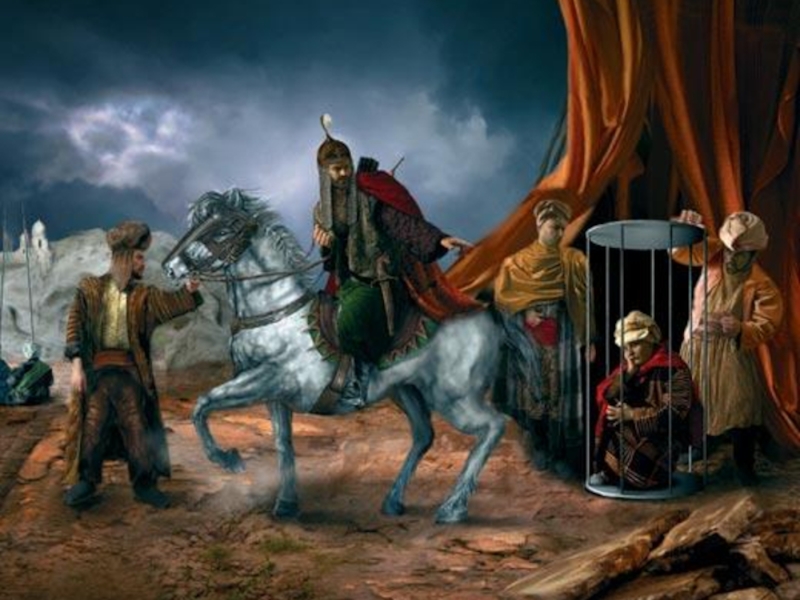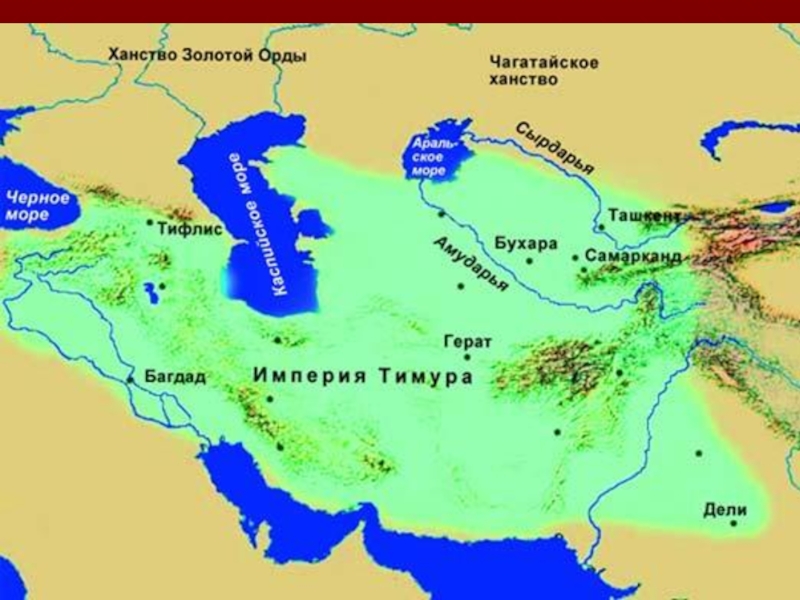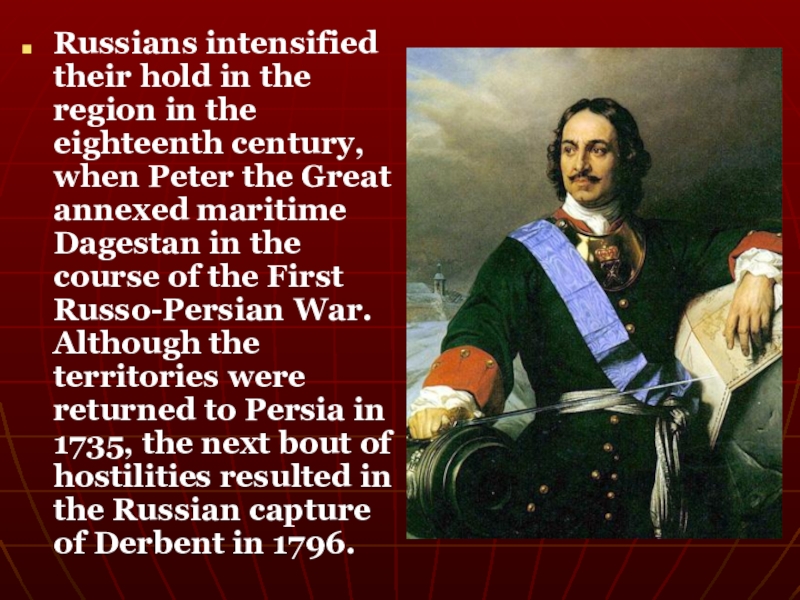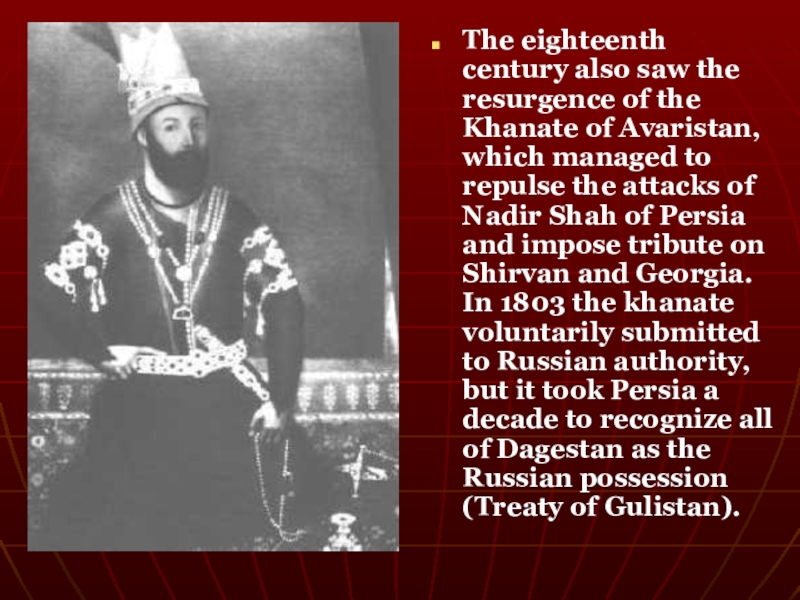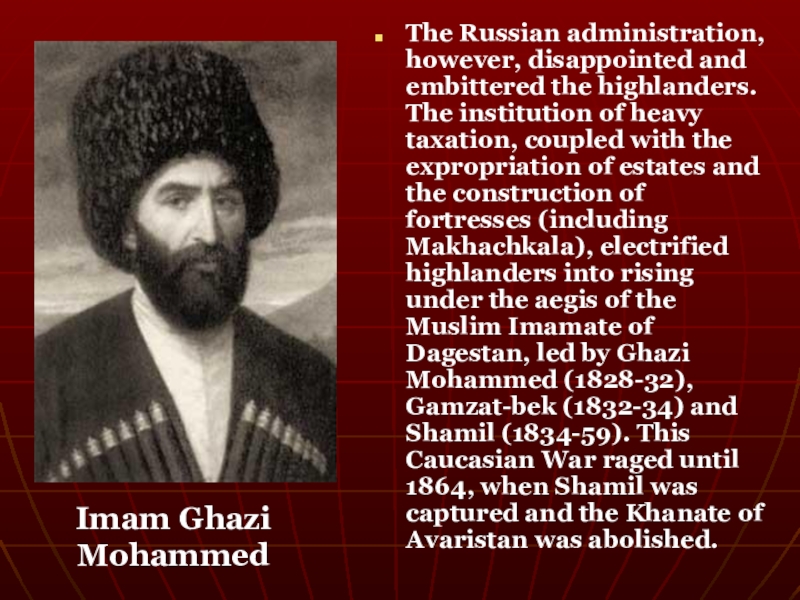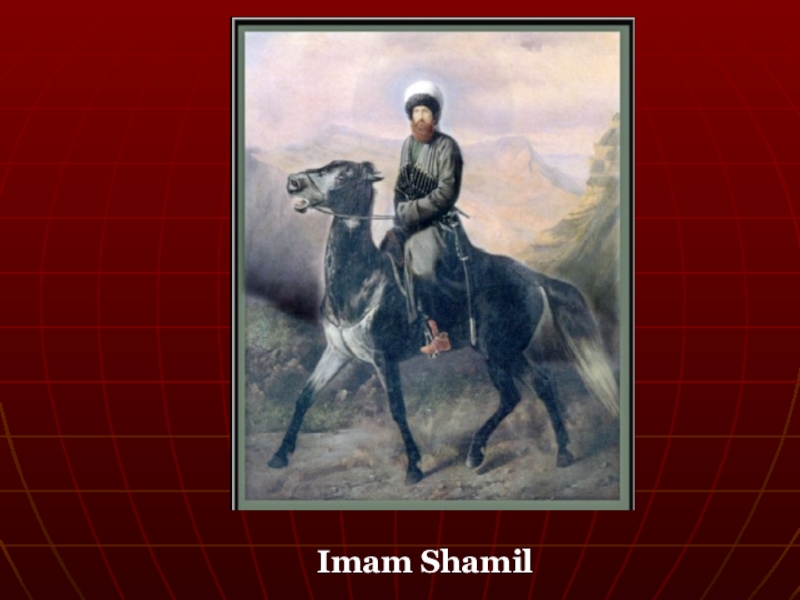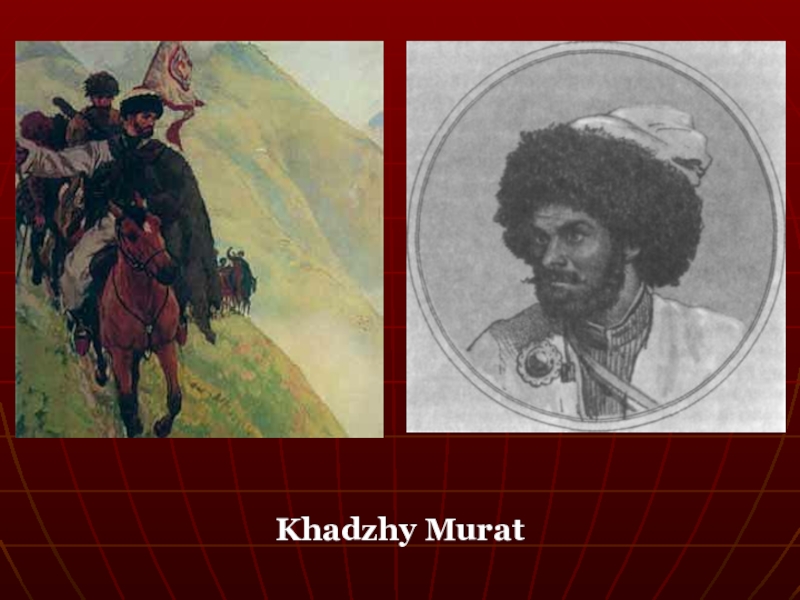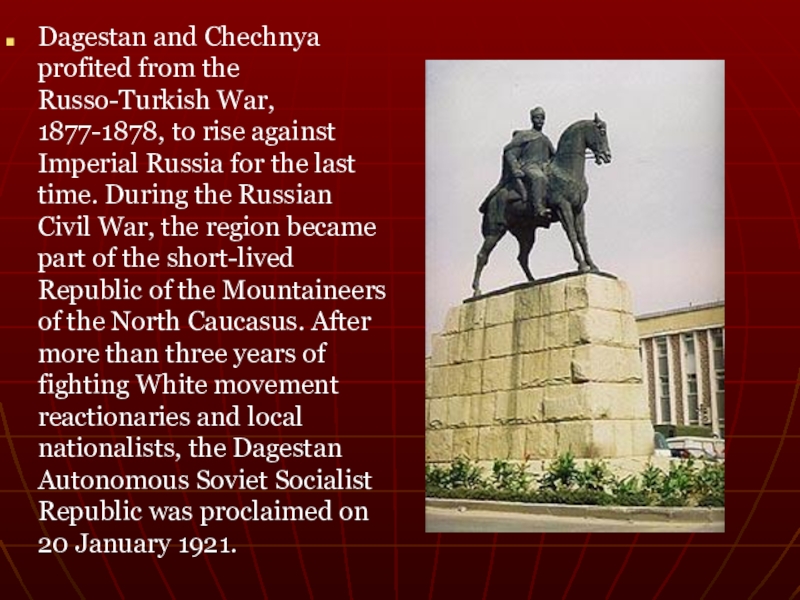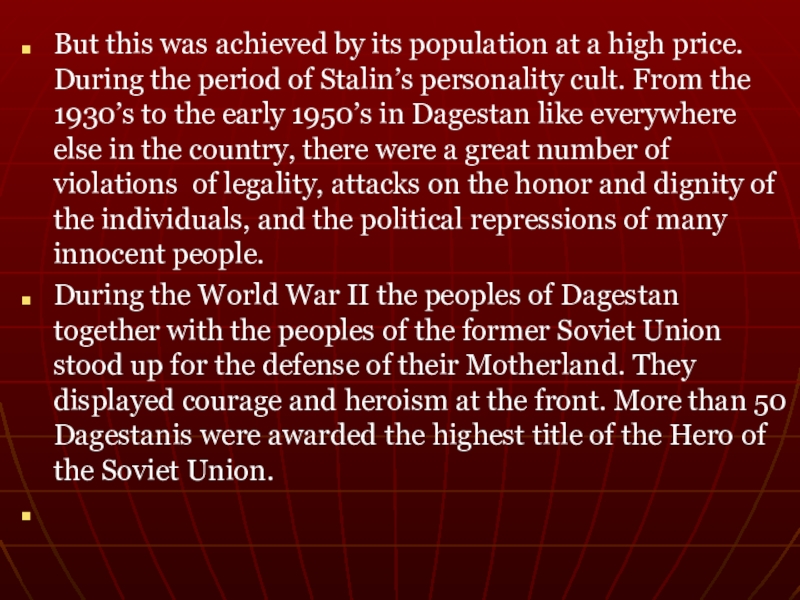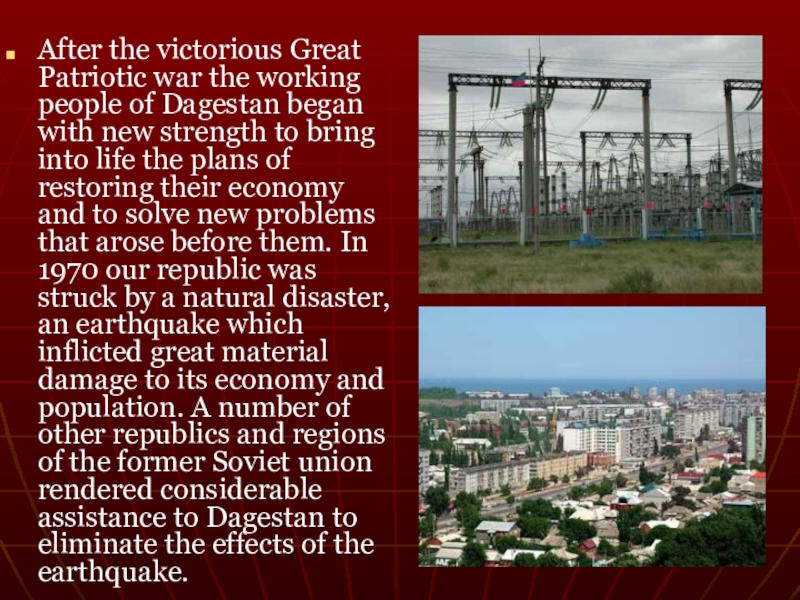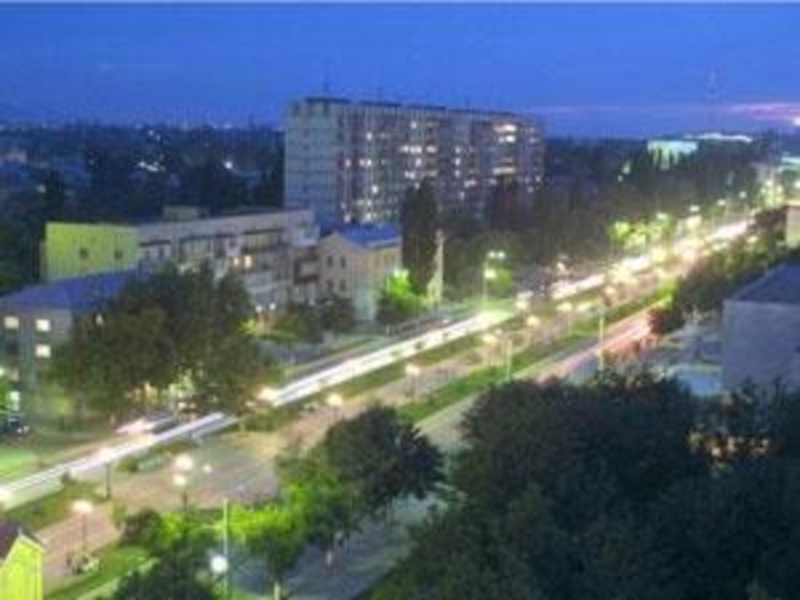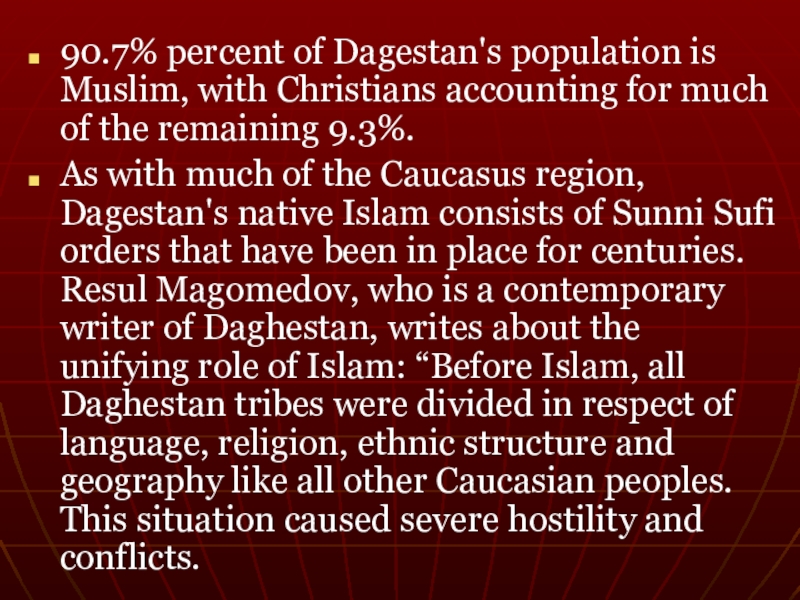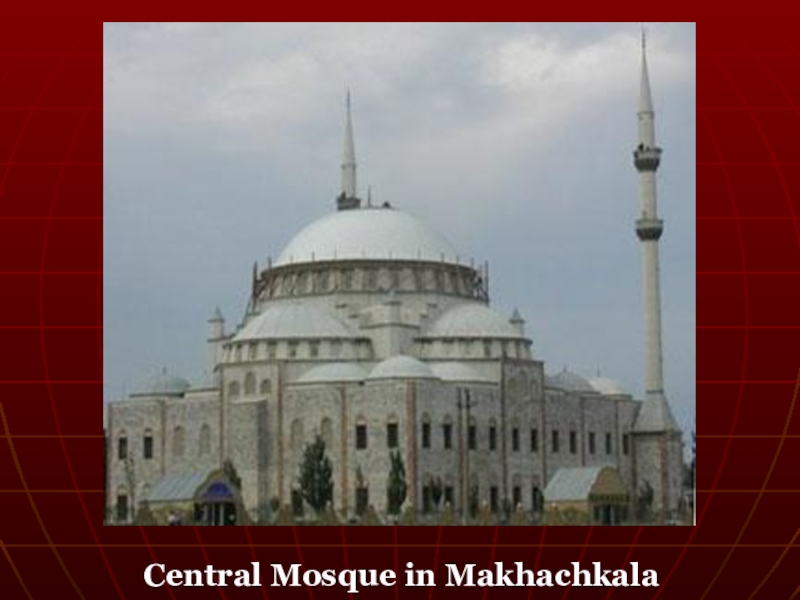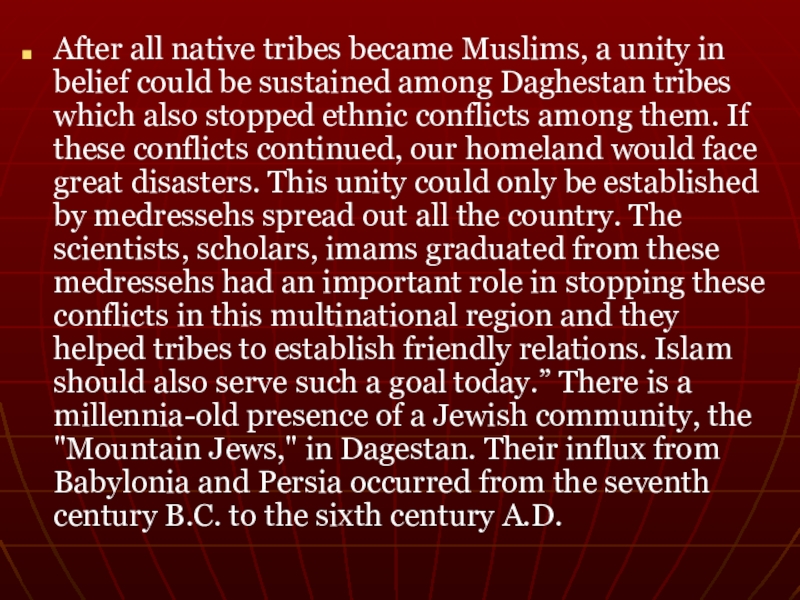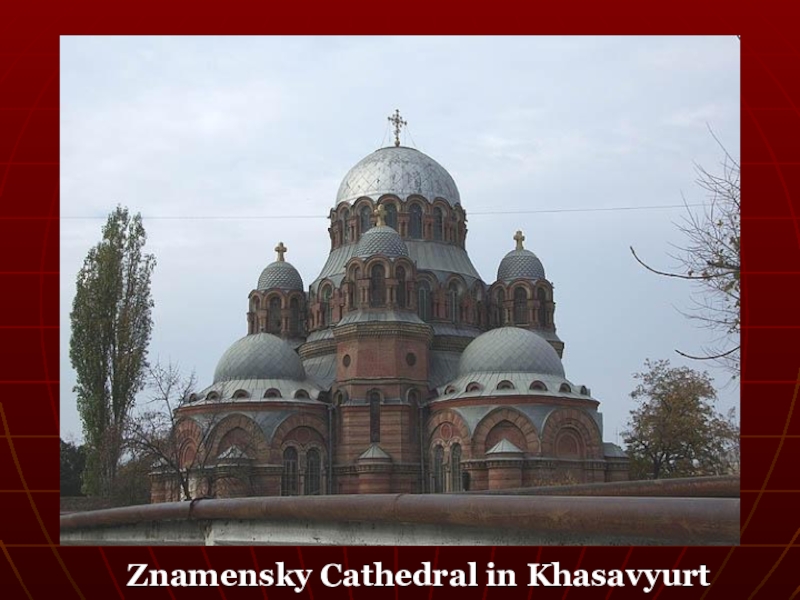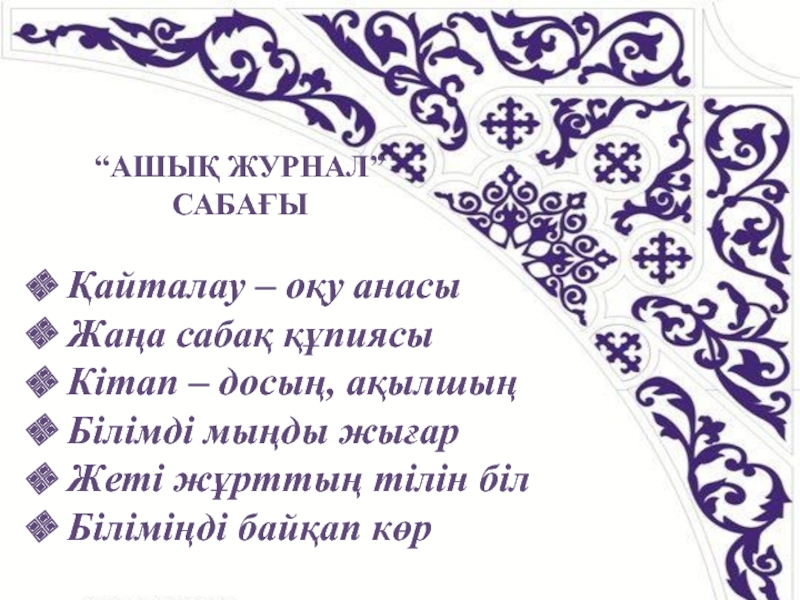- Главная
- Разное
- Образование
- Спорт
- Естествознание
- Природоведение
- Религиоведение
- Французский язык
- Черчение
- Английский язык
- Астрономия
- Алгебра
- Биология
- География
- Геометрия
- Детские презентации
- Информатика
- История
- Литература
- Математика
- Музыка
- МХК
- Немецкий язык
- ОБЖ
- Обществознание
- Окружающий мир
- Педагогика
- Русский язык
- Технология
- Физика
- Философия
- Химия
- Шаблоны, фоны, картинки для презентаций
- Экология
- Экономика
Презентация, доклад на тему Урок презентация: История Дагестана .
Содержание
- 1. Урок презентация: История Дагестана .
- 2. The Map of Dagestan
- 3. The oldest records about the region refer
- 4. In the fifth century AD, the Sassanids gained
- 5. Due to Muslim pressure and internal disunity,
- 6. Слайд 6
- 7. Слайд 7
- 8. Слайд 8
- 9. As the Mongol authority gradually eroded, new
- 10. Russians intensified their hold in the region
- 11. The eighteenth century also saw the resurgence
- 12. Nadir Shah. Engraving by Thamas Koulikan
- 13. Memorial “Vatan” at the place of defeat
- 14. The Russian administration, however, disappointed and embittered
- 15. Imam Shamil
- 16. Khadzhy Murat
- 17. The Battle of Ghimri
- 18. Dagestan and Chechnya profited from the Russo-Turkish
- 19. After the Civil War, Dagestan managed
- 20. But this was achieved by its population
- 21. After the victorious Great Patriotic war
- 22. Слайд 22
- 23. 90.7% percent of Dagestan's population is Muslim,
- 24. Central Mosque in Makhachkala
- 25. After all native tribes became Muslims, a
- 26. Znamensky Cathedral in Khasavyurt
The Map of Dagestan
Слайд 3The oldest records about the region refer to the state of
Caucasian Albania in the south, with its capital at Derbent and other important centres at Chola, Toprakh Qala, and Urtseki. The northern parts were held by a confederation of pagan tribes. In the first few centuries AD, Caucasian Albania continued to rule over what is present day Azerbaijan and the area occupied by the present day Lezghians. It was fought over in classical times by Rome and the Persian Sassanids and was early converted to Christianity.
Слайд 4In the fifth century AD, the Sassanids gained the upper hand and
constructed a strong citadel at Derbent, known henceforward as the Caspian Gates, while the northern part of Dagestan was overrun by the Huns, followed by the Caucasian Avars. It is not clear whether the latter were instrumental in the rise of the Christian kingdom in Central Dagestan highlands. Known as Sarir, this Avar-dominated state maintained a precarious existence in the shadow of Khazaria and the Caliphate until the ninth century, when it managed to assert its supremacy in the region.
Слайд 5Due to Muslim pressure and internal disunity, Sarir disintegrated in the
early twelfth century, giving way to the Khanate of Avaristan, a long-lived Muslim state which relied on the alliance with the Golden Horde and braved the devastating Mongol invasions of 1222 and 1239, followed by Tamerlane's raid in 1389.
Tamerlane
Слайд 9As the Mongol authority gradually eroded, new centres of power emerged
in Kaitagi and Tarki. In the sixteenth and seventeenth centuries, legal traditions were codified, mountainous communities (djamaats) obtained a considerable degree of autonomy, while the Kumyk potentates (shamhals) asked for the Tsar's protection.
Слайд 10Russians intensified their hold in the region in the eighteenth century,
when Peter the Great annexed maritime Dagestan in the course of the First Russo-Persian War. Although the territories were returned to Persia in 1735, the next bout of hostilities resulted in the Russian capture of Derbent in 1796.
Слайд 11The eighteenth century also saw the resurgence of the Khanate of
Avaristan, which managed to repulse the attacks of Nadir Shah of Persia and impose tribute on Shirvan and Georgia. In 1803 the khanate voluntarily submitted to Russian authority, but it took Persia a decade to recognize all of Dagestan as the Russian possession (Treaty of Gulistan).
Слайд 13Memorial “Vatan” at the place of defeat of the troops of
the conqueror of the world Persian ruler Nadir Shah by the united troops of Dagestans. The defeat of Nadir Shah and the glorious victory of the peoples of Dagestan over the most redoubtable armies at that time caused a great international response and became a vivid witness of the might and force of the peoples of Dagestan.
Слайд 14The Russian administration, however, disappointed and embittered the highlanders. The institution
of heavy taxation, coupled with the expropriation of estates and the construction of fortresses (including Makhachkala), electrified highlanders into rising under the aegis of the Muslim Imamate of Dagestan, led by Ghazi Mohammed (1828-32), Gamzat-bek (1832-34) and Shamil (1834-59). This Caucasian War raged until 1864, when Shamil was captured and the Khanate of Avaristan was abolished.
Imam Ghazi Mohammed
Слайд 18Dagestan and Chechnya profited from the Russo-Turkish War, 1877-1878, to rise
against Imperial Russia for the last time. During the Russian Civil War, the region became part of the short-lived Republic of the Mountaineers of the North Caucasus. After more than three years of fighting White movement reactionaries and local nationalists, the Dagestan Autonomous Soviet Socialist Republic was proclaimed on 20 January 1921.
Слайд 19 After the Civil War, Dagestan managed to liqudate economic devastation,
hunger and epidemics. This opened the broader possiblities for the consolidation of all Dagestanian people and ethnic groups into a nation for a rapid developmentof the economy and culture of the young republic. Indeed during the first five year plans Dagestan was converted from a backward agrarian country into a a developing industrial-agrarian republic.
Слайд 20But this was achieved by its population at a high price.
During the period of Stalin’s personality cult. From the 1930’s to the early 1950’s in Dagestan like everywhere else in the country, there were a great number of violations of legality, attacks on the honor and dignity of the individuals, and the political repressions of many innocent people.
During the World War II the peoples of Dagestan together with the peoples of the former Soviet Union stood up for the defense of their Motherland. They displayed courage and heroism at the front. More than 50 Dagestanis were awarded the highest title of the Hero of the Soviet Union.
During the World War II the peoples of Dagestan together with the peoples of the former Soviet Union stood up for the defense of their Motherland. They displayed courage and heroism at the front. More than 50 Dagestanis were awarded the highest title of the Hero of the Soviet Union.
Слайд 21
After the victorious Great Patriotic war the working people of
Dagestan began with new strength to bring into life the plans of restoring their economy and to solve new problems that arose before them. In 1970 our republic was struck by a natural disaster, an earthquake which inflicted great material damage to its economy and population. A number of other republics and regions of the former Soviet union rendered considerable assistance to Dagestan to eliminate the effects of the earthquake.
Слайд 2390.7% percent of Dagestan's population is Muslim, with Christians accounting for
much of the remaining 9.3%.
As with much of the Caucasus region, Dagestan's native Islam consists of Sunni Sufi orders that have been in place for centuries. Resul Magomedov, who is a contemporary writer of Daghestan, writes about the unifying role of Islam: “Before Islam, all Daghestan tribes were divided in respect of language, religion, ethnic structure and geography like all other Caucasian peoples. This situation caused severe hostility and conflicts.
As with much of the Caucasus region, Dagestan's native Islam consists of Sunni Sufi orders that have been in place for centuries. Resul Magomedov, who is a contemporary writer of Daghestan, writes about the unifying role of Islam: “Before Islam, all Daghestan tribes were divided in respect of language, religion, ethnic structure and geography like all other Caucasian peoples. This situation caused severe hostility and conflicts.
Слайд 25After all native tribes became Muslims, a unity in belief could
be sustained among Daghestan tribes which also stopped ethnic conflicts among them. If these conflicts continued, our homeland would face great disasters. This unity could only be established by medressehs spread out all the country. The scientists, scholars, imams graduated from these medressehs had an important role in stopping these conflicts in this multinational region and they helped tribes to establish friendly relations. Islam should also serve such a goal today.” There is a millennia-old presence of a Jewish community, the "Mountain Jews," in Dagestan. Their influx from Babylonia and Persia occurred from the seventh century B.C. to the sixth century A.D.
